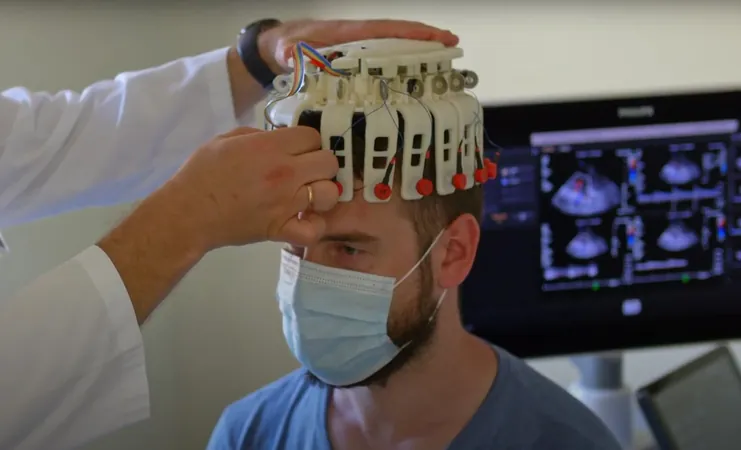
Revolutionary Monitoring System Unveiled: The Future of Post-Stroke Care is Here!
2025-05-16
Author: Nur
Stroke remains a daunting global health crisis, ranking as a leading cause of long-term disability. According to the World Health Organization, an alarming 15 million people suffer strokes every year, leading to 5 million fatalities and leaving another 5 million permanently disabled. Strokes strike unpredictably, occurring every two seconds and claiming a life every six.
In the race against time, every minute matters during a stroke. Immediate medical care can save significant brain tissue, but the journey doesn't end there. Long-term monitoring is equally vital as patients embark on a complex recovery journey.
"A stroke is critical; accurate diagnosis is key to effective treatment. However, post-stroke monitoring can be just as crucial, as a patient's condition may deteriorate unexpectedly," emphasizes Dr. Darius Jegelevičius, a researcher at Kaunas University of Technology (KTU) in Lithuania.
Introducing the Smart Monitoring System!
To tackle this urgent need, Lithuanian scientists have pioneered an innovative system designed to track heart activity, pulse propagation, physical movement, and blood flow changes in the brain—all at the same time!
Synchronized Signals: A Game Changer
The standout feature of this system is its ability to record multiple physiological signals simultaneously, unveiling a comprehensive view of circulatory function. "While predicting strokes remains a challenge, once they occur, integrating data on heart electrical activity, vascular mechanics, and brain blood flow paints a clearer picture of circulatory processes," shares Dr. Jegelevičius.
Using an electrocardiogram (ECG) and a photoplethysmogram (FPG), the system captures cardiac events and physical movements. It also measures changes in cerebral blood flow through bioimpedance technology, a remarkable breakthrough.
Understanding Bioimpedance: The Secret Ingredient
"An ECG displays the heart's electrical signals, guiding muscle contractions. The FPG gauges blood pulse propagation by observing how light interacts with tissues, providing insights into the circulatory system’s performance," explains Dr. Jegelevičius.
What's truly unique about this system is its bioimpedance measurement, which reflects tissue resistance to electrical currents. "Just as water enhances electrical flow, more blood lowers bioimpedance, and less blood raises it. This principle allows us to assess how blood flow changes in the brain, particularly during a stroke," he adds.



 Brasil (PT)
Brasil (PT)
 Canada (EN)
Canada (EN)
 Chile (ES)
Chile (ES)
 Česko (CS)
Česko (CS)
 대한민국 (KO)
대한민국 (KO)
 España (ES)
España (ES)
 France (FR)
France (FR)
 Hong Kong (EN)
Hong Kong (EN)
 Italia (IT)
Italia (IT)
 日本 (JA)
日本 (JA)
 Magyarország (HU)
Magyarország (HU)
 Norge (NO)
Norge (NO)
 Polska (PL)
Polska (PL)
 Schweiz (DE)
Schweiz (DE)
 Singapore (EN)
Singapore (EN)
 Sverige (SV)
Sverige (SV)
 Suomi (FI)
Suomi (FI)
 Türkiye (TR)
Türkiye (TR)
 الإمارات العربية المتحدة (AR)
الإمارات العربية المتحدة (AR)